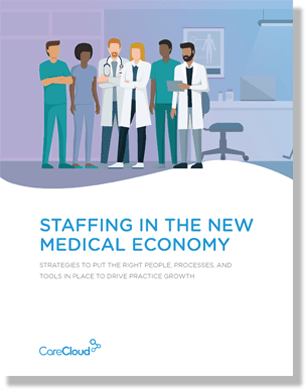While exploring the types and varieties of therapy, people frequently tend to weigh the merits of various healing processes. Two prominent choices that regularly emerge in discussions are group therapy and concurrent therapy. Both aim to guide people on their journey to mental well-being. Yet, they diverge substantially in methodology and supposed results. This exploration seeks to highlight the differences between group therapy and concurrent therapy. We will also be shedding light on how each may be beneficial for the ones searching for mental health guidance.
Group Therapy vs Concurrent Therapy – What to Choose?
What is Group Therapy?
Group therapy is a form of psychotherapy in which a trained therapist works concurrently with a set of those who work on a similar form of venture or activity collectively. This type of environment leverages group dynamics, encouraging communication and shared experiences amongst participants. Group therapy can utilize various techniques, which include cognitive-behavioral therapy, psychodynamic therapy and interpersonal therapy, custom-designed to the targeted goals and desires of the individuals.
Key Features of Group Therapy
- Shared Experience: The strength of shared experiences is significant to group therapy. Participants find solace and gain a deep understanding that others in the group face similar challenges, lowering emotions of isolation and fostering a supportive community.
- Diversity of Perspectives: Group therapy brings together individuals from diverse backgrounds, enriching the therapeutic journey with multiple perspectives on common troubles. Learning about different coping strategies and insights complements the overall learning experience.
- Cost-Effectiveness: Group therapy is usually more economical than individual therapy, making mental health support cheap for individuals, no matter their economic status. Sharing of costs consequently reduces the financial burden on contributors, besides engendering strong community feelings among them.
Group Therapy Treatments
- Substance Abuse Treatment: Group therapy is broadly utilized in substance abuse treatment programs, providing a supportive environment for people in rehabilitation.
- Anxiety and Depression: Groups focusing on anxiety and depression provide a platform for individuals to discuss coping strategies, challenges, and successes, fostering an experience of mutual trust and bond.
- Trauma Recovery: Group remedy serves as a secure area for people handling trauma, enabling them to explore their experiences and connect with others who may have encountered comparable hardships.
What is Concurrent Therapy?
Concurrent therapy is a method where a therapist treats two people who are concurrently assigned different activities. This approach can involve various sorts of therapy for similar issues or deal with numerous mental health concerns simultaneously. This type of therapy aims to improve efficiency by addressing the wishes of individuals concurrently.
Key Features of Concurrent Therapy
- Simultaneous Treatment: Concurrent remedy includes treating two patients concurrently, frequently engaged in distinct therapeutic activities tailored to their particular needs.
- Efficiency and Optimization: This method optimizes therapeutic assets, allowing therapists to address the distinct necessities of individuals within an equal time body.
- Customization for Individual Needs: While individuals interact in concurrent therapy, the tasks are custom-designed to their specific needs and requirements, making sure a customized method of treatment.
- Balancing Patient Independence: Concurrent therapy encourages patients to work independently on activities that fit their therapeutic requirements, promoting a feeling of autonomy.
Concurrent Therapy Treatments
-
Couples Counseling and Mindfulness Meditation:
A couple receives counseling to navigate demanding situations in their relationship and improve communication. Concurrently, one partner practices mindfulness meditation to improve emotional regulation and self-awareness.
-
Family Therapy and Cognitive-Behavioral Therapy (CBT):
Family members interact in therapy to address interpersonal dynamics and communication styles.
-
Dialectical Behavior Therapy (DBT) and Music Therapy:
Participants concerned in DBT work on emotional regulation and interpersonal effectiveness. Simultaneously, others interact in music therapy, using it as a self-expression and emotional processing tool.
-
Play Therapy for Children and Parenting Skills Training:
Children participate in play therapy to let out their feelings and address behavioral issues. Concurrently, parents undergo schooling to improve their parenting skills and create a supportive circle in the family environment.
-
Expressive Writing and Outdoor Adventure Therapy:
Participants interact in expressive writing to explore and understand their emotions. Simultaneously, others take part in outdoor adventure therapy, combining physical activities and exposure to nature for therapeutic advantages.
-
Anger Management Group and Equine-Assisted Therapy:
Participants in an anger management institution explore different strategies to manage and release anger constructively. Simultaneously, another person participates in equine-assisted therapy, fostering emotional regulation via interactions with horses.
-
Narrative Therapy and Cooking Classes:
Individuals engage in narrative therapy to explore and reshape personal narratives. Concurrently, contributors attend cooking lessons, use the culinary arts as a therapeutic medium for creativity, and bring out new talent.
Bonus Section: Role of RCM in Therapy Practices
Many therapy practices face revenue management challenges, including billing errors, delayed reimbursements, and administrative burdens. These problems can hinder financial balance and divert attention from patient care. Revenue Cycle Management (RCM) provides a comprehensive solution by automating and optimizing financial methods.
RCM in therapy practices eliminates many challenges in this area of expertise, including processing accurate billing, well-timed claim submission, efficient charge handling, and minimizing mistakes and delays, which results in quicker reimbursements, enhanced cash flow, and streamlined operations. By alleviating the monetary pressure on therapy practices, RCM permits practitioners to focus more on providing quality patient care, which, in the long run, enhances the overall effectiveness and sustainability of the practice.
Conclusion
The recognition that individuals might also benefit from diverse healing practices in the mental health sector underscores the significance of personalization and flexibility. Whether looking for the communal aid of group therapy or the comprehensive care of concurrent therapy, the key lies in collaborative choice-making with intellectual health specialists.
In sum, the journey closer to mental well-being is different for each person, and the selected therapeutic path should align with the unique needs and aspirations of the participant. By learning the nuances of institutional and concurrent therapy, people can make informed choices, ensuring that their chosen approach aligns with their mental health and complete well-being goals.



